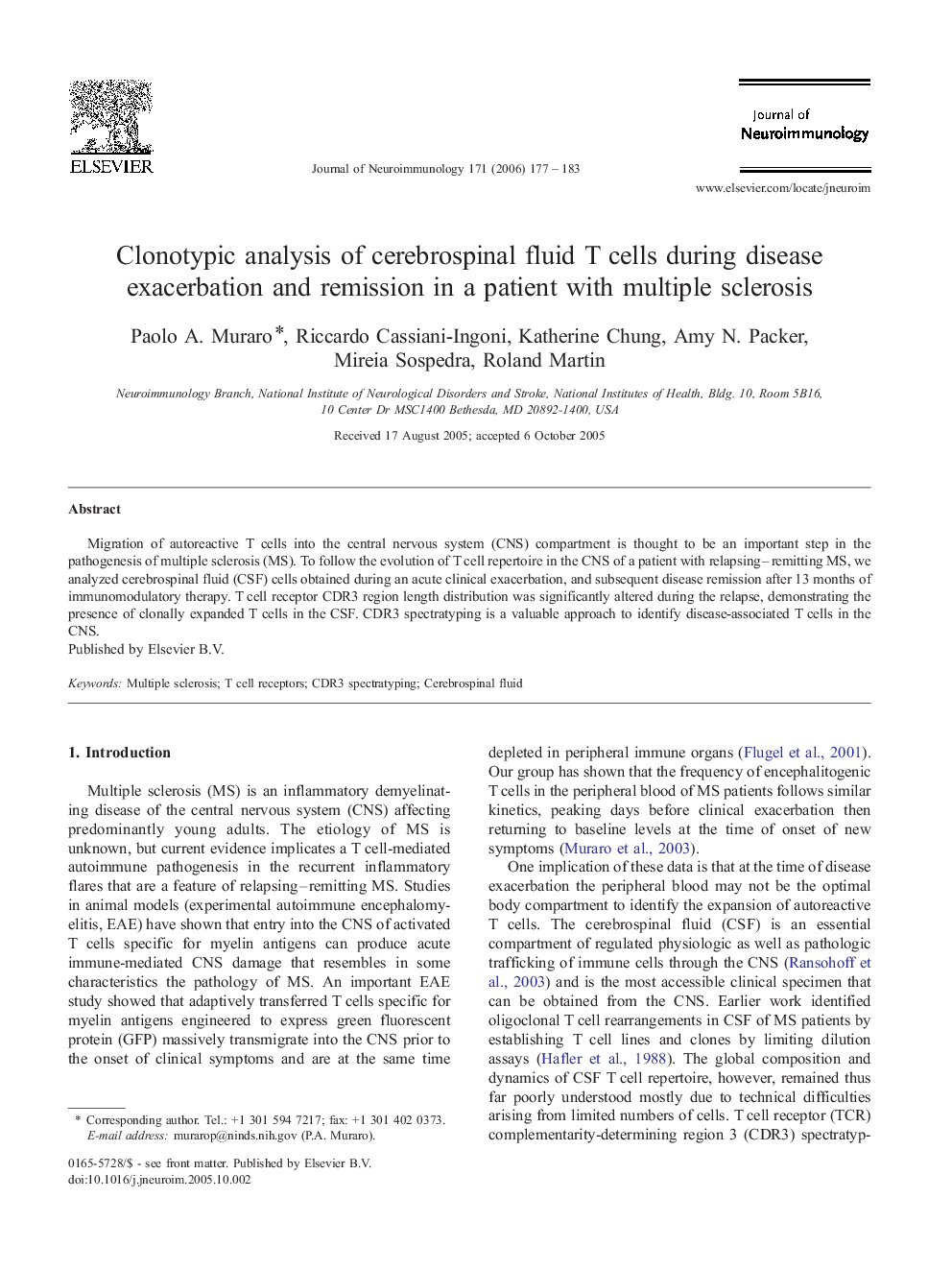| Article ID | Journal | Published Year | Pages | File Type |
|---|---|---|---|---|
| 3066148 | Journal of Neuroimmunology | 2006 | 7 Pages |
Abstract
Migration of autoreactive T cells into the central nervous system (CNS) compartment is thought to be an important step in the pathogenesis of multiple sclerosis (MS). To follow the evolution of T cell repertoire in the CNS of a patient with relapsing–remitting MS, we analyzed cerebrospinal fluid (CSF) cells obtained during an acute clinical exacerbation, and subsequent disease remission after 13 months of immunomodulatory therapy. T cell receptor CDR3 region length distribution was significantly altered during the relapse, demonstrating the presence of clonally expanded T cells in the CSF. CDR3 spectratyping is a valuable approach to identify disease-associated T cells in the CNS.
Related Topics
Life Sciences
Immunology and Microbiology
Immunology
Authors
Paolo A. Muraro, Riccardo Cassiani-Ingoni, Katherine Chung, Amy N. Packer, Mireia Sospedra, Roland Martin,
